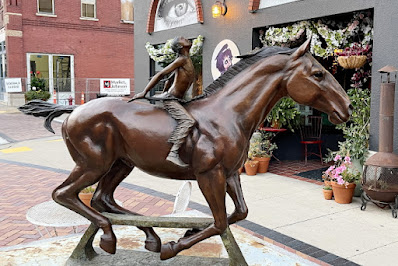After various disputes between France and other countries, the eastern part of Louisiana was ceded to the British and the western part of Louisiana was ceded to Spain. Then, in 1803, Napoleon Bonaparte, First Consul of the French Republic, sold the remaining Territory of Louisiana to the United States for 15 million dollars, or about $0.03 per acre. This purchase doubled the size of United States.
It was unclear what President Thomas Jefferson had actually purchased because the language in the contract was very vague and did not clearly describe the land boundaries. The Louisiana Lands were generally defined as the lands between the Mississippi River and the Rocky Mountains; however, it took several years to finally define the exact boundaries.
Over the years I have explored many places in the central and western parts of the Louisiana Purchase; but I have never spent a lot of time in Minnesota, or the lands along the Mississippi River. I had never been to the headwaters of the Mississippi River; so I decided this would be a great RonnieAdventure, but not by the most direct route.
After flying from Las Vegas to Minneapolis/St Paul, I rented a car and drove to the Birkmose Park Indian Burial Grounds, located on a hill overlooking the St Croix River in Hudson, Wisconsin.
There is a paved road to the top of the hill, then a hiking trail runs along the ridgeline where the burial mounds are located. Along the trail there are historic markers and benches where hikers can rest and enjoy the scenery overlooking the St. Croix River.
It is unknown when the mounds were made, but it is believed that they date back to the Middle or Late Woodland period, which was between 100 B.C. and 1200 A.D. According to the St. Croix County Historical Society: "The Late Woodland Period was a time of cultural changes, with population growth and larger settlements. It saw the introduction of bow and arrow and maize as an important element of diet."
According to the Archeology and Preservation Department, the mounds have never been excavated; but excavations of similar mounds have found remains of multiple individuals and a variety of artifacts in each mound. It is believed that the mounds were made by the St. Croix Valley Sioux Indians, but there are no known records that document who was buried in the mounds.
Also located in Hudson is the Octagon House, which is now a museum that contains local historic objects including medical instruments, hand tools, cookware, tools & implements, crockery, industry & business machines and a cyclone proof house model form the 1893 World Fair.
Devil's Punchbowl Preserve near Menomonie, has two hiking trails and a small waterfall that drops into a natural amphitheater. There are wooden stairs that lead down to the bottom of the amphitheater and another trail that leads across the top of the falls. During the spring the falls are much larger than in the fall when I visited the Preserve.
A sign at the trailhead states that the exposed rocks in the amphitheater date back 515 million years and two uncommon ferns have been documented covering the rocks. There are also tales of ghosts, fairies, little men, and trolls that live in the Preserve. There is no charge to visit the falls, but on the web it states that visitors should bring a shiny stone or some Skittles to appease the trolls.
Mound Hill Park near Elk Mound contains an observation tower that is dedicated to deceased rural letter carriers of Dunn County, Wisconsin. It is the only such dedicated monument in America. From the top of the tower, there are great views of the surrounding area. Some documents on the web refer the tower as a "Castle," or "Dead Mailmen Haunted Castle."
Eau Claire (population 69,421) is locate at the confluence of the Chippewa and Eau Claire Rivers, and is home of the famous University of Wisconsin-Eau Claire 475 member marching bank. The band makes frequent trips around the United States and has performed at numerous locations around the world.
The city is known for its many arts and music festivals and located in the downtown area is the Sculpture Tour Eau Claire, which is the largest rotating sculpture tour in the nation. There are many artists that live in Eau Claire, and in August 2024, the city hosted the US Open Chainsaw Sculpture Championship. The city has also hosted the Wisconsin State Horseshoe tournament and the World Horseshoe Championship.
Eau Claire is surrounded by farms, and is known as the "Horseradish Capital of the World" because Silver Springs Foods, the world's largest grower and producer of horseradish, is located in Eau Claire. For people that like to shop at Menards, the Menards world headquarters is also located in Eau Claire.
I started my tour of artwork in Carson Park and then went to the downtown area to see Sculpture Tour Eau Claire.















































No comments:
Post a Comment